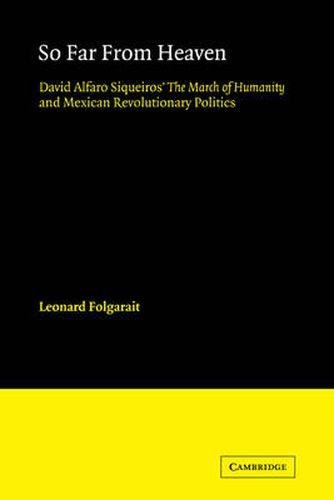Readings Newsletter
Become a Readings Member to make your shopping experience even easier.
Sign in or sign up for free!
You’re not far away from qualifying for FREE standard shipping within Australia
You’ve qualified for FREE standard shipping within Australia
The cart is loading…






Between 1964 and 1971, the Mexican mural painter David Alfaro Siqueiros produced The March of Humanity on Earth and Toward the Cosmos in Mexico City, his last major project and the largest mural in the world. This illustrated book mounts a careful study of the painting, which it sees as marking the end of the Mexican mural movement. The main purpose of the book is to place the mural into the social-historical context of the period of its production. Due to this approach, the mural is seen not only as a work of art, but also as a symbol and carrier of Mexican political ideology, especially as it concerns the government’s attempts to continue presenting the Mexican Revolution of 1910 as the source and basis of contemporary and future social, political, and economic policy. Professor Folgarait’s book provides a fascinating case-study highlighting the conflict of modernistic and naturalistic trends in art, and makes an important contribution to the study of Mexican art of the twentieth century and to the general topic of the relationship of art to politics.
$9.00 standard shipping within Australia
FREE standard shipping within Australia for orders over $100.00
Express & International shipping calculated at checkout
Between 1964 and 1971, the Mexican mural painter David Alfaro Siqueiros produced The March of Humanity on Earth and Toward the Cosmos in Mexico City, his last major project and the largest mural in the world. This illustrated book mounts a careful study of the painting, which it sees as marking the end of the Mexican mural movement. The main purpose of the book is to place the mural into the social-historical context of the period of its production. Due to this approach, the mural is seen not only as a work of art, but also as a symbol and carrier of Mexican political ideology, especially as it concerns the government’s attempts to continue presenting the Mexican Revolution of 1910 as the source and basis of contemporary and future social, political, and economic policy. Professor Folgarait’s book provides a fascinating case-study highlighting the conflict of modernistic and naturalistic trends in art, and makes an important contribution to the study of Mexican art of the twentieth century and to the general topic of the relationship of art to politics.